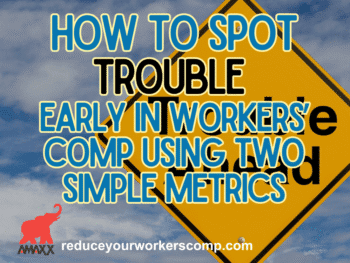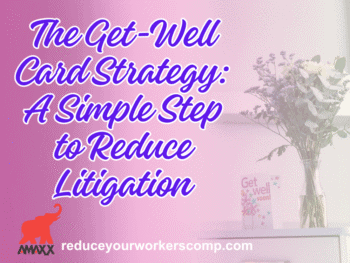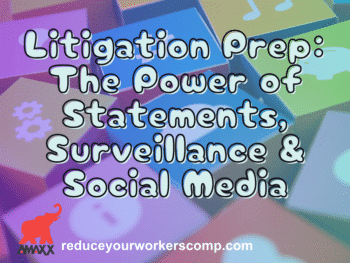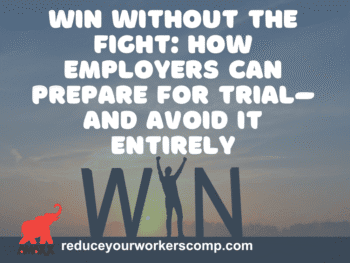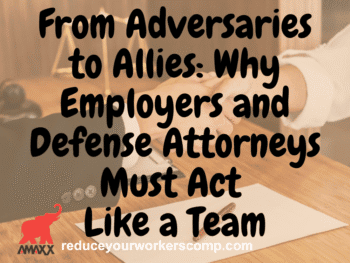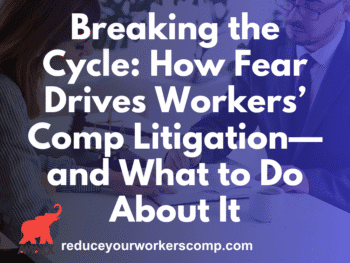Nearly all problems on a workers comp claim are traceable to the first report of injury (FROI). The first report (C-2 in NY) is one of two or three documents starting a claim. Other forms are the worker’s application for benefits (C-3 in NY) or an initial medical report sent to the workers compensation board.
However, the employer’s first report of injure (C-2) is determines, more than anything else, what the future course of the claim will be like, such as:
1. Will there be, literally, a dozen or more unnecessary hearings?
2. Will there be a trial over non-existent defenses?
3. Will real defenses go unnoticed until far too late, or never be noticed at all?
4. Will reserves be unnecessarily high?
5. Will proper payments be too late? (WCxKit)
6. Will the wrong witnesses be called on the wrong issues?
If these questions sound like unchecked chaos, it is really very close to an average performance than it is to a rare failure. Why?
Persons routinely review first reports coming in from a variety of employers know the answer: blank boxes. Or boxes marked “unknown” in answer to relevant questions. Questions an employer, with a bit of diligence, can answer; or explain why an answer is not possible.
The remedy to the above is a phone call and a document. The person required to complete the first report of injury is a witness to the incident and does not have the necessary knowledge to answer all, or even most, of the questions on a first report. If the person is a witness, usually a foreman, it’s unlikely answers to such questions as the workers compensation insurance policy number, date of coverage, etc., are known.
As a result, pressure to get a report, any report, in quickly inevitably leads to the deadly barrage of blanks. In time, the blanks metamorphose into land mines exploding unexpectedly at hearings months or years in the future.
The first measure to take when blank boxes are encountered is a phone call. People able to provide quick answers to transform the blank box into a source of useful information are within the sound range of a ringing telephone. Therefore, make the correct phone ring and get the answer.
The second measure involves some pieces of paper and a stapler. The first report of injury form may have nearly sixty boxes to complete, with little space for complicated answers. Therefore, let documents answer the questions and, to assure their presence, staple them to the report form. And put the best of all answers — “see attached”— into the appropriate box.
Be pro-active about dissemination of information. Send a copy to the carrier, of course, but also to the workers compensation board, the worker and the worker’s attorney. Sooner or later, all will need the information so make it sooner. (WCxKit)
Documents have certain advantages over witnesses, the chief being that they never change their stories. Share them with others. Ask Ted who should be copied on these documents – you'd be suprised.
Remember, if the employer leaves boxes blank the worker’s attorney will be happy to volunteer the answers and it’s rare the employer will agree with those conclusions.
Author: Attorney Theodore Ronca is a practicing lawyer from Aquebogue, New York and an expert in providing training to employers in basic reporting and investigation of workers compensation claims. His NY FROI Training Program and Coaching can help employers do it right the first time. He also is a frequent writer and speaker, and has represented employers in the areas of workers compensation, Social Security disability, employee disability plans, and subrogation for over 30 years. Attorney Ronca can be reached at 631-722-2100.
WC IQ TEST: http://www.workerscompkit.com/intro/
WORK COMP CALCULATOR: http://www.LowerWC.com/calculator.php
MODIFIED DUTY CALCULATOR: http://www.LowerWC.com/transitional-duty-cost-calculator.php
WC GROUP: http://www.linkedin.com/groups?homeNewMember=&gid=1922050/
SUBSCRIBE: Workers Comp Resource Center Newsletter
Do not use this information without independent verification. All state laws vary. You should consult with your insurance broker or agent about workers comp issues.
SUBSCRIBE: Workers Comp Resource Center Newsletter
Do not use this information without independent verification. All state laws vary. You should consult with your insurance broker or agent about workers comp issues.
©2011 Amaxx Risk Solutions, Inc. All rights reserved under International Copyright Law. If you would like permission to reprint this material, contact Info@WorkersCompKit.com.




